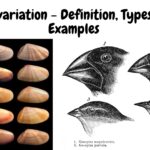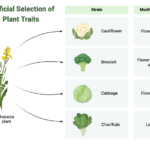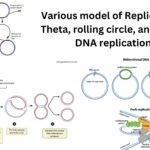O Level Biology 40 Views 1 Answers
Sourav PanLv 9November 4, 2024
Describe inheritance as the transmission of genetic information from generation to generation
Describe inheritance as the transmission of genetic information from generation to generation
Please login to save the post
Please login to submit an answer.
Sourav PanLv 9May 15, 2025
Inheritance: The Transmission of Genetic Information
Inheritance is the biological process by which genetic information is passed from one generation to the next. This transmission of genetic material is fundamental to the continuity of life and plays a crucial role in determining the traits and characteristics of organisms. Here’s a detailed overview of how inheritance works.
Key Concepts of Inheritance
- Genetic Material:
- Genetic information is encoded in DNA (deoxyribonucleic acid), which contains genes—the units of heredity that dictate specific traits. Each gene consists of a sequence of nucleotides that provides instructions for producing proteins, which in turn influence an organism’s phenotype (observable characteristics).
- Chromosomes:
- DNA is organized into structures called chromosomes. Humans, for example, have 46 chromosomes arranged in 23 pairs, with one set inherited from each parent. Each chromosome contains many genes, and the specific combination of these genes contributes to an individual’s unique traits.
- Mendelian Inheritance:
- The principles of inheritance were first systematically studied by Gregor Mendel in the 19th century. Mendel’s experiments with pea plants led to the formulation of key concepts such as:
- Dominant and Recessive Traits: Some traits are dominant and will be expressed in the phenotype even if only one copy of the gene is present, while recessive traits require two copies to be expressed.
- Law of Segregation: During the formation of gametes (sperm and egg cells), the two alleles for a trait segregate from each other so that each gamete carries only one allele for each gene.
- Law of Independent Assortment: Genes for different traits are inherited independently of one another, provided they are located on different chromosomes.
- The principles of inheritance were first systematically studied by Gregor Mendel in the 19th century. Mendel’s experiments with pea plants led to the formulation of key concepts such as:
- Types of Inheritance:
- Inheritance can occur in various forms, including:
- Autosomal Dominant: Only one copy of a dominant allele is needed for the trait to be expressed (e.g., Huntington’s disease).
- Autosomal Recessive: Two copies of a recessive allele must be present for the trait to be expressed (e.g., cystic fibrosis).
- X-Linked Inheritance: Traits associated with genes on the X chromosome may exhibit different patterns in males and females (e.g., hemophilia).
- Polygenic Inheritance: Traits controlled by multiple genes result in a continuous range of phenotypes (e.g., human height, skin color).
- Inheritance can occur in various forms, including:
- Genetic Variation:
- Inheritance contributes to genetic variation within populations, which is essential for evolution and adaptation. Variations arise through mutations, gene flow, and sexual reproduction, leading to diverse phenotypes that can be subject to natural selection.
0
0 likes
- Share on Facebook
- Share on Twitter
- Share on LinkedIn
0 found this helpful out of 0 votes
Helpful: 0%
Helpful: 0%
Was this page helpful?




